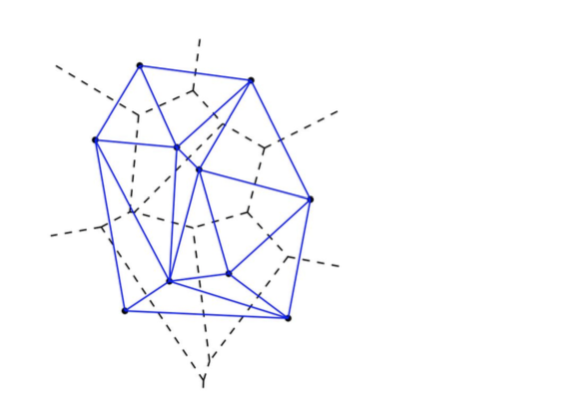07: Mesh Data Structures
Model anything with arbitrary precision
Easy to build and modify
Efficient computations
flexible
rendered quickly
most modern 3D models are textured polygon models
polygons are planar, can only approximate curved surfaces with many polygons
3D Modeling
- Points: 2D range image\/\/3D point cloud
- Solids: voxels\/solid geometry
- Surfaces: polygonal mesh, parametric surface, subdivision surfaces, implicit surfaces
- Procedural: particle system, fractal
Range Data
- Range Image: pixel location (r,c), pixel contains depth (not colour)
- 3D point cloud: set of points in 3D space (xi. yi. zi)
Representing Polygonal Meshes
Simple (but dumb)
- float triangle[n][3][3]
- redundant: each vertex stored multiple times
Vertex List, Face List
- List of vertices (only vertex coordinates)
- List of Triangles, each triple of vertex id's (O(F) time for F faces)
Fancier Schemes
store more topological info
Adjacency queries answered in O(1) time
Properties of Meshes
polygons b\/c simple to represent and manipulate, approximate smooth surfaces, each planarpolygon has a unique normal
- Solidity: A mesh represents a solid object if its faces together enclose a finite amount of space.
- Connectedness: A mesh is connected if every face shares at least one edge with some other face.
- Simplicity: A mesh is simple if the object it represents is solid and has no holes through it.
- Planarity: A mesh is planar if every face is a planar polygon.
- Convexity: A mesh is convex if the line connecting any two points within the object lies wholly inside the mesh object.
Mesh Triangulation
Voronoi Diagram
Subdivision of the plane where the faces correspond to the regions where one site is closest
Given some trees, which region will they occupy? Given ambulance posts in a country, in case of an emergency somewhere, where should the ambulance come from?

Delaunay Triangulation
Straight line embedding of the dual graph G

Mesh Simplification
need for accuracy depends on the application
storage efficiency
faster rendering
simpler manipulation

Vertex Clustering
partition space into cells (grids, spheres, octrees, etc.)
merge all vertices within the same cell
general & robust, but not best quality

Mesh Retiling
Resample mesh with “uniformly spaced” random vertices
triangulate the new vertices
slow, blurs the sharp features

Mesh Decimation

Mesh Data Structure

Half Edge Data Structure

Surface of Revolution
